Novel Investigation of Stochastic Fractional Differential Equations Measles Model via the White Noise and Global Derivative Operator Depending on Mittag-Leffler Kernel
Saima Rashid and Fahd Jarad
1Department of Mathematics,Government College University,Faisalabad,38000,Pakistan
2Department of Natural Sciences,School of Arts and Sciences,Lebanese American University,Beirut,11022801,Lebanon
3Department of Mathematics,Faculty of Arts and Science,Çankaya University,Ankara,06790,Turkey
4Department of Medical Research,China Medical University,Taichung,40402,Taiwan
ABSTRACT Because of the features involved with their varied kernels,differential operators relying on convolution formulations have been acknowledged as effective mathematical resources for modeling real-world issues.In this paper,we constructed a stochastic fractional framework of measles spreading mechanisms with dual medication immunization considering the exponential decay and Mittag-Leffler kernels.In this approach,the overall population was separated into five cohorts.Furthermore,the descriptive behavior of the system was investigated,including prerequisites for the positivity of solutions,invariant domain of the solution,presence and stability of equilibrium points,and sensitivity analysis.We included a stochastic element in every cohort and employed linear growth and Lipschitz criteria to show the existence and uniqueness of solutions.Several numerical simulations for various fractional orders and randomization intensities are illustrated.
KEYWORDS Measles epidemic model;Atangana-Baleanu Caputo-Fabrizio differential operators;existence and uniqueness;qualitative analysis;Newton interpolating polynomial
1 Introduction
Measles is among the highly contagious airborne infections in humans,and it can result in significant sickness,life-long problems,and even fatality[1].Paramyxovirus causes measles,an abrupt and deadly infectious infection.This infection can be transferred mostly through atmospheric spraying to mucosa in the pulmonary system,and it can survive in the phlegm of a contaminated person’s nasal passages.When an infectious individual coughs or has respiratory secretions,it can be communicated via exposure to a contaminated nasopharynx.Only individuals are intermediate victims of the measles infection.It is split into four rounds of disease,including implantation,prodrome,erythema,and recuperation[2],see Fig.1.
Measles complications seem to be particularly likely in children under the age of five and people over the age of twenty.Tuberculosis,eardrum,and nostril problems,ulcerations,chronic diarrhea,jaundice,conjunctivitis,starvation,and cognitive impairment are just a few of them[3].
Measles is highly contagious,with an infection rate of more than 90 percent among those who are susceptible.It is,indeed,a global health issue.Several underdeveloped nations,notably Asian countries,are affected.According to the WHO,measles affects over 20 million people each year,with developing countries accounting for more than 95 percent of fatalities [4],particularly in Sub-Saharan Africa,where the disease accounts for 15 percent of all fatalities.The simplest method to avoid acquiring measles is to be immunized.It is risk-free,productive,and affordable.Youngsters who have not been inoculated and expectant mothers are more vulnerable to measles and its ramifications,which can include mortality.Immunization from measles acquired by inoculation has been proven to last about two decades and is widely considered to be a reality among healthy humans.At 9–11 months after birth,vaccine effectiveness is estimated to be 85 percent,increasing to 97 percent with a one-year intravenous infusion[4].
The goal of medication is to relieve anxiety unless the ailment is cleared by the adaptive defensive mechanism.The diagnosis of acute is not killed by any therapeutic intervention.Meditation and basic fever-reduction treatments are usually all that is required for a swift comeback.Measles patients require hospitalization,hydration,temperature and anxiety relief,skin rash,as well as medicine [2],see Fig.2.The technique of depicting important considerations employing quantitative concepts and formulas is known as numerical simulation.On the basis of foresight,mathematical formulation can be divided into stochastic and deterministic systems.Since the beginning of the nineteenth century,numerical simulations have been used to investigate contagious infections.Various deterministic and probabilistic epidemiological approaches have been used to comprehend contagious illnesses,including measles[5],diarrhea[6],the SIRC model[7],chikungunya spread[8],and henceforth.

Figure 2:Measles impact on immune system
In the numerical techniques of microbiological contamination,the deterministic methodology has had significant disadvantages.They are easily interpretative,however,supply fewer insights and are difficult to estimate,so they are not stochastic and generally require modeling from very similar modeling outcomes around one manifestation.The stochastic description of a dynamic reflects the system’s unpredictability in evolution.Variation,which is key to the development of the multiverse,and carelessness,which is a hallmark of people,both contribute to unpredictability.As a consequence,the random variable should specifically contain both levels of variation in order to depict ambiguity in a straightforward fashion[9].Stochastic approaches are important in many interdisciplinary fields,notably measles prevalence and distribution,as they convey a higher sense of authenticity than deterministic approaches[10].
Owing to the robust computational formulas including index law,decay,and inversion from growth rate to index law,which can encapsulate perhaps concealed intricacies of existence,the concepts of fractional formulations have lately been coupled to generate innovative differentiation operators in several serious challenges.These novel formulations have the distinctive bonus of being able to describe phenomena that satisfy the index law,exponential decay kernel,and generalized Mittag-Leffler (M-L) kernels at the same time [11–13].Because of their exceptional capabilities,these novel operators are well suited to modeling a wide range of complicated real-world concerns.Researchers have devised a framework known as Brownian motion,or stochastic elements,to express unpredictability [14].This concept has been successfully implemented in a variety of disciplines in recent years,including neuroscience,automation,and epidemiology.While both have shown efficiency in simulating dynamic behavior on their own,it is important to note that differential operators,having mentioned kernels,as well as Brownian movements or stochastic ideas,never account for index law,fading memory,or overlapping influences [15–17].However,we must keep in mind that several situations in existence are capable of exhibiting both mechanisms.Consequently,neither fractional differential operators nor stochastic techniques adequately explain them.The propagation of any contagious disease could be fully comprehended using straightforward mathematical formulae since multiple aspects influence its transmission among individuals [18–21].Several researchers proposed various investigations for controlling the epidemics and their eradication.For example,Qureshi et al.[5]discussed the monotonic reduction of measles spread via Atangana-Baleanu-Caputo derivative operator,Qureshi et al.[6]represented the nonlinear dynamics of diarrhoea transmission via fractalfractional operator,Rihan et al.[7] contemplated the SIRC model via Caputo fractional derivative operator,and Rashid et al.[22] investigated the oncolytic effectiveness model with M1 virus via Atangana-Baleanu fractional derivative operator.
Adopting the above propensity,we consider the transmission of the measles infection via stochastic fractional derivative operators in the Antagana-Baleanu and Caputo-Fabrizio sense.In the past decade,only a handful of important studies on the prevalence and distribution of measles have been conducted.A SIR mathematical formulation of measles incorporating inoculation and two periods of transmissibility was used in the investigation.Their research discovered that if all vulnerable people were inoculated,the ailment would be eradicated.They proposed that the measles vaccine be implemented immediately,as no child should be permitted to join a classroom lacking proof of at least two doses of measles immunization.Stochastic modeling of measles emergence and spread involving inoculation intervention was investigated in [23,24].In comparison to a deterministic approach,stochastic interpretation proved to be more productive in investigating the evolution of measles.Furthermore,Edward et al.[25]developed a quantitative framework for controlling and eliminating measles disease propagation.Measles eradication necessitates keeping the efficient reproductive count below 1 and establishing moderate concentrations of vulnerability.In this analysis,we aim to generate stochastic and deterministic differential equation (DE) systems of measles outbreaks while taking the overall community and immunization regime into account via the fractional derivative operator techniques.For small sensitive community densities,simulated findings indicate that the probabilistic model’s responses will have considerable stochastic features.For greater vulnerable population levels,the deterministic framework’s result is a restriction of the stochastic counterpart’s alternatives.The presence,originality,consistency,and simulation studies of a mathematical framework for measles transmission are also investigated.We verified the model’s consistency,as well as the existence and uniqueness of the model’s findings via the linear growth and Lipschitiz conditions.The system is numerically solved using the Newton interpolating technique.All of the aforementioned investigations have created deterministic and stochastic mathematical formulas for measles propagation and prevention.To the best of the researchers’expertise,no investigation has been performed on a stochastic framework of measles prevalence and distribution with dual dosage vaccination by segregating first and second treatment immunized groups.However,we must be certain of the interval specified.
2 Preliminaries
In this part,we will review several essential concepts for fractional calculus involving singular and non-singular kernels.
Definition 2.1.([26]) Forφ >0,then the Caputo fractional derivative off1:(0,∞)R is continuous and differentiable,presented as
Definition 2.2.([26])Forφ >0,then the Riemann-Liouville fractional integral off1:(0,∞)R is presented as
Definition 2.3.([27]) Suppose there be a functionf1∈H1(u,v),u where M(φ)is a normalization function such that M(0)=M(1)=1. Iff1H1(u,v),then the derivative operator is redefined as Theorem 2.4.([27])Forφ∈(0,1),then the following ordinary DE has a unique solution by implementing the inverse Laplace transform and convolution theorem described as Definition 2.5.([28]) Suppose there be a functionf1∈H1(u,v),u whereEφis the M-L kernel and B(φ)=+1-φdenotes the normalized function. Definition 2.6.([28]) Suppose there be a functionf1∈H1(u,v),u Definition 2.7.([28])Forφ∈(0,1),then the Atanagana-Baleanu fractional integral is stated as: Theorem 2.8.Forφ∈(0,1),then the following ordinary DE has a unique solution by implementing the inverse Laplace transform and convolution theorem described as It is worth noting that Atangana established the aforementioned concepts with the global notion quite early.In his study[29],he offered a description of the global derivative.Let us have a glance at a few different variations of it. Definition 2.9.([29])Forφ∈(0,1],then there be a continuous mappingf1(ξ)and an increasing positive mappingG(ξ)such that there be a singular/non-singular kernelK(ξ),then the fractional global derivative(GD)in Caputo context is stated as follows: where ∗denotes the convolution operator. Next,we present the concept of fractional global derivative (GD) in Caputo form,Riemann-Liouville form,Caputo-Fabrizio form,and Atanagana-Baleanu form,respectively,which is mainly by Atangana[29]. Definition 2.10.([29])For 0<φ≤1,then the GD in the Caputo sense is defined as Definition 2.11.([29])For 0<φ≤1,then the GD in the Riemann-Liouville sense is defined as Definition 2.12.([29])For 0<φ≤1,then the GD in the Caputo-Fabrizio sense is defined as Definition 2.13.([29])For 0<φ≤1,then the GD in the Atangana-Baleanu in the Caputo sense is defined as Definition 2.14.([29])For 0<φ≤1,then the GD in the Atangana-Baleanu in the Riemann sense is defined as Integral representations of the derivatives here are employed in numerical demonstrations,hence integral operators with GD in the Riemann-Liouville form are supplied as: Definition 2.15.([29])For 0<φ≤1,then the integral version of RiemannLiouville in GD form is defined as Definition 2.16.([29])For 0<φ≤1,then the integral version of Caputo-Fabrizio in GD form is defined as Definition 2.17.([29])For 0<φ≤1,then the integral version of Atanagana-Baleanu in GD form is defined as Definition 2.18.([29])For 0<φ≤1,then the GD in the Atangana-Baleanu in the Caputo sense is defined as Despite the fact that deterministic DEs have been frequently employed to simulate the transmission of several contagious ailments,daily information gathering revealed that their distribution occasionally follows non-locality and unpredictability.This shows that neither fractional DEs nor stochastic differential equations(SDEs)can duplicate such a dispersion.However,SDEs are appropriate for simulating complex issues if the dissemination maintains random noise.Some examples of studies conducted that involve SDEs are [30–33].The following is a brief description of how to differentiate when considering unpredictability: whereρj=,for j=1,...,nrepresents the independent Wiener process.In the measles epidemic model,the whole population is divided into five cohorts as follows:susceptibleS(ξ),infectedI(ξ),V1(ξ)initial prescription of vaccination,V2(ξ)second prescription of vaccination and recoveredR(ξ),respectively are presented as follows: Therefore,the aforesaid (23) can be transformed into Itôs type SDEs,by inserting of noise environment. supplemented with initial conditions (ICs)(S(0),V1(0),V2(0),I(0),R(0))T=while(ρj)j=1,2,...,5represents the densities of unpredictability andBj(ξ)j=1,...,5are Brownian motions of every cohort. Susceptible classS(ξ)is grown at frequencyΞ,and diminishing for first dosage of immune at speedϑV1,and lowered at rateωSI,those who acquire first prescription of vaccine to vulnerable at rateχ1S.Interaction involving the vulnerable group increases the contaminated category by incidenceωSI,while the infectious group recovers at rateδI.The healed group is boosted because the contaminated group survived at a rate ofδIand added a new treatment of vaccination to recuperate at a rate ofχ2V2.The Immunizations attracted of newborns at a rateΩ,get initial dose of immune to susceptible at a rateχ1S,and diminished owing to dwindling for initial dosage of immune to susceptible at rateϑV1,acquire first dosage of vaccine to intravenous infusion of vaccine at a rateχ3V1.The immunized subsequent dose group is enhanced by receiving the initial prescription of immune  and decreasing by receiving the subsequent prescriptionχ3V1of immune and healing at a rateχ2V2.Background extinction rateϕand infectious mortality rateηfor the contaminated group only fell in all sub-classes.N(ξ)represents the entire population count at timeξ,whereN(ξ)=S(ξ)+V1(ξ)+V2(ξ)+I(ξ)+R(ξ)is consistent and combines adequately.Because the incubation phase is not important for the highly vulnerable contact,the unprotected cohort is excluded.Recruitment of new infants who have completed their first dosage of vaccine is placed in the immunocompetent group,while anyone who has not gotten their initial dosage of vaccine is placed in the vulnerable category.When an infectious agent comes into contact with another person,the virus can be transmitted.There is no breakdown of therapy.A person will either recuperate or perish after receiving the initial and subsequent doses of vaccination.The progression of the measles sickness is represented in Fig.3. Figure 3:Flow chart for measles infection model Here,we will use the structural evaluation of deterministic dynamics to analyze the evolution of stochastic frameworks in this part.Additionally,the (23) solution pertains to the (24) mean.To get equilibria,we first investigate a measles epidemic model (23),and then we examine adequate requirements wherein the equilibria are locally stable. Theorem 3.1.If there be a viable domainΩ=(S(0),V1(0),V2(0),I(0),R(0))of the systems(23)and(24),thenΩ∗=is bounded. Proof.Considering,the overall population in the system under discussion is provided byN(ξ)=S(ξ)+V1(ξ)+V2(ξ)+I(ξ)+R(ξ). After differentiation with respect toξand utilizing(23),yield Simple computations yield ln(Ξ+Ω-ϕN)≤-(ξ+C1),whereC1is a constant. It follows that Ξ+Ω-ϕN≥exp(-ϕξ)exp(-ϕC1). Assume thatN0=exp(-ϕC1)and=0.Therefore(Ξ+Ω-ϕN)≥0 gives In order to find the EP at which the outbreak is eliminated from the community is found in this section.Allowing the right hand sides of(23)to zero andI=R=0,yields After simplification,we have i.e.,is the phase where no disease exists in the environment. Here,the fundamental reproductive number for(24)can be evaluated by employing Itôs formula for twice differentiable mapping on[0,T]tof1(I)=ln(I).Utilizing the fact of Taylor series expansion so that we have Now,by means of system(24),we have It follows that Higher order differentials(dξ,dB)approach quickly zero;(dξ)20 anddξdB(ξ)0.The stochastic componentdB2(ξ)is supplied asdB2(ξ)=dξpertaining to Brownian motion principles.where we implement the underlying features to compute(dI(ξ))2,we have Taking into account the next-generation matrix,we computed E0=,whereS0=. Hence,the stochastic fundamental reproductive number is For the(24),we deliver an analogous stochastic eradication of transmission.In the long term,if R0<1,the population of the contaminated group will approach zero.If there is an R0<1,then the DFE of the system(24)is locally asymptotically stable. Theorem 3.2.If there be R0<1,thenI(ξ)will approaches to zero almost certainly tremendously stable of system(24)is locally asymptotically stable,i.e.,<0. Proof.By means of(23),we have Performing integration from 0 toξ,we have It follows that Assume thatQ(ξ)=.AsQ(ξ)represents the martingale [34] having a quadratic variation described by In view of strong law,we have At DFE,we have This concludes that R0<1. Here,the equilibrium point at which the infection survives in the population is determined in this part.By putting all of the systems equations equal to zero,the EEP of model(23)can be determined as After simplifying,then system(23)has the EEP as follows: This section determines the importance of each component in the spread and prevention of measles infection through sensitivity evaluation.When a criterion improves,the investigation can help measure and compare the variation in a factor.This data is critical for studying the disease’s emergence and spread.With regard to a factorM,the sensitivity criterion is determined by The sensitivity values of the components of the measles illness framework are shown in the aforementioned evaluation.The following is a summary of sensitivity index comprehension. The fundamental reproducing number’s responsiveness levels to the essential factors are addressed and presented in the previous analysis.As a result,the factorsω,Ξ,Ω,ϑandχ1have high sensitivity values,indicating that increasing their levels has a significant effect on the spread of infection in the population.However,because the factorsϕ,η,δandρ4have deleterious sensitivity values,diminishing their level will result in the infection outbreak spreading more. Next,we investigate a generic measles stochastic model in which the standard temporal derivative is transformed into the global derivative in this part.It is specified as the GD of a differentiable mappingf1with respect to an increasing non-negative continuous mappingGas follows: In fact,ifGis differentiable then Considering the system(24),we can simply evaluate the disease’s elimination and prevalence.For this,we assume the system(24)with respect to the global derivative as follows: SinceGis differentiable,we have It is important to mention that the framework is simple to determine if the ambient noise(ρj),j=1,2,...,5. Taking the integral on both sides,we have In view of the Brownian motion,we have With the classic GD,we obtain the complex stochastic equation below.Let us describe the requirement in which the nonlinear problem has a specific value,based on Atangana’s work[29,35]. Theorem 4.1.Assume there be positive constantsAj,j=1,2,...,7 andCj,j=1,2,...,7 such that Proof.By means of model (29),we prove the Lipschitz condition for the proposed system as follows: Let us introducing the norm then for allS,S1∈R2andξ∈[0,T],we have Now,we find for allI,I1∈R2andξ∈[0,T],we have Now,we find for allR,R1∈R2andξ∈[0,T],we have Next,in order to prove the linear growth conditions for model (29).To do this,for all(ξ,S)∈R2×[t0,T],we have Furthermore,we have Again,we have Again,we have Now,we have Also,we have Clearly,we see that both assumptions are satisfied.Hence,according to the given hypothesis,the measles epidemic model(29)has a unique solution. In what follows,the elimination of specific groups is discussed in this part.We did this by specifying. We shall begin using classS(ξ).When the integral is applied to both sides ofS(ξ),the result is It follows that Thus,we have Considering the classI(ξ),we have This leads to Thus,we have Analogously,we have In this part,we use the Toufik et al.[36]technique to develop a numerical scheme for the stochastic framework(29)as follows: Assuming thatGto be a differentiable mapping,then we have SinceB′(ξ)is differentiable,we have Atξn+1=(n+1)Δξ,we obtain Again,atξn=nΔξ,we have Letting the difference of the two successive terms as follows: Taking Observe that Furthermore,implementing the interpolation Also,we have Inserting the values ofψ1andψ2into(43),then we have The simulation tool for addressing the fractional order measles stochastic model involving GD is described in this section.We shall employ kernels of the exponential decay law and the M-L law to construct a highly meaningful approach.We shall employ Toufik et al.[36]numerical criteria to create the numerical results(29). First we demonstrate the numerical scheme for the Caputo-Fabrizio derivative operator: SinceGis differentiable,we have By making the use of Caputo-Fabrizio integral,we apply SinceB(ξ)is differentiable,we can write Atξn+1=(n+1)Δξ,we have Further,atξn=nΔξ,we have For the sake of simplicity,we have Furthermore,implementing the interpolation Also,we have Now,the interpolation polynomials are It follows that After rearranging all expressions,we have Now we can employ(43)technique on measles epidemics stochastic model: Here,we illustrate the numerical scheme for the Atangana-Baleanu derivative operator: SinceGis differentiable,we have By making the use of Atangana-Baleanu integral,we apply SinceB(ξ)is differentiable,we can write Atξn+1=(n+1)Δξ,we have For the sake of simplicity,we have Furthermore,implementing the interpolation Also,we have Now,the interpolation polynomials are Thus,we have In view of the Lagrange interpolation polynomial technique,we have After plugging the values ofϒ1(ξ,y(ξ))andϒ2(ξ,y(ξ)),then we have Now we can employ(43)technique on measles epidemics stochastic model: In what follows,we describe and investigate the system’s input variables,as well as simulation studies.We applied input variables from Table 1 further to simulate the constructed framework.The fractional stochastic mathematical formulation is expressed in the context of global derivative operators in terms of Caputo differential operators of visualizations developed with MATLAB via multiple fractional orders.This investigation is being carried out to determine the mechanisms of measles spreading in the community.Taking into account the technique of Toufik et al.[36],is utilized to determine the numerical configurations. Table 1:Explanation of attributed values supposed in the system Figs.4–6 demonstrate the stochastic behavior for different fractional orders in terms of global derivative in the Caputo-Fabrizio sense,demonstrating that the number of vulnerable,contaminated individuals diminishes from the beginning stage until a specific periodξ,at which point it begins to decline to zero.In this case,the proposed ICs are(S,V1,V2,I,R)=(1000,500,50,15,3).Figs.4–6 show the unpredictability densities atρ1=0.001,ρ2=0.003,ρ3=0.004,ρ4=0.006,andρ5=0.006,respectively.This indicates that vaccination of both the first and second doses (dual treatment) aims to manage the measles infection and,throughout its duration,to eliminate the infection from the community while maintaining the healed community growth.Finally,we can perceive that the fractional stochastic model equations’solutions are straightforward in computation,possess randomness in behavior,and are more productive in nature. Figure 4:Stochastic behavior of the susceptible class S(ξ)and vaccinated after dose V1(ξ)for various fractional-orders by the use of global derivative in the Caputo-Fabrizio sense Figure 5:Stochastic behaviour of the dual dose vaccination group V2(ξ) and infectious class V1 for various fractional-orders by the use of global derivative in the Caputo-Fabrizio sense Figure 6:Stochastic behavior of the recovered class R(ξ) for various fractional-orders by the use of global derivative in the Caputo-Fabrizio sense In Figs.7–9,we attempted to demonstrate how the interaction rateωinfluences the proportion of contaminated people via the global derivative in the context of Atangana-Baleanu-Caputo version.The mathematical findings were generated by modifying the interaction rateωvalue with differential fractional orders while maintaining the remaining factors fixed.When the interaction rateωis boosted in the (24) from 0.09091 to 0.3,the number of targeted people increases significantly and consistently.Furthermore,whenω=0.6 is administered,the number of highly contagious individuals apparently rises to 25 and then gradually declines,although it remains greater than in the prior two incidences.In this case,the utilized ICs are(S,V1,V2,I,R)=(1000,500,100,10,2).Figs.7–9 depicit the unpredictability densities atρ1=0.001,ρ2=0.003,ρ3=0.004,ρ4=0.006,andρ5=0.006,respectively.Because of the unpredictability tendency,the findings from the fractional stochastic model are likewise accumulating while preserving their perturbing feature.Furthermore,the ultimate result suggests that incorporating the value of interaction rateωaffects the rate of contaminated people.As a result,we may deduce that as the interaction rateωincreases while the other components stay unchanged,the measles infection progresses in the population.By adjusting the value of acquiring prescribed medication at a rateχ2while maintaining the rest of the components fixed,Figs.10–12 depict the number of people in the community who received a new dose of vaccinationvs.time-frame.When the probability of acquiring a subsequent dosage of vaccination improved fromχ2=0.8 to 1.8,the proportion of immunized second populations grew substantially and frequently.Furthermore,whenχ2=2.8 is increased,the amount of inoculated second populations increases exponentially.In this case,the utilized ICs are(S,V1,V2,I,R)=(1000,500,100,10,2).Figs.10–12 depict the unpredictability densities are atρ1=0.0018,ρ2=0.0016,ρ3=0.0011,ρ4=0.009,andρ5=0.006,respectively.In the illustration,the inoculated (second dose) community declines gradually for the classical stochastic model[37],whereas it drops sporadically for the fractional stochastic model.As a result of acquiring an additional dosage of vaccination,the intended group significantly contributes to society’s measles elimination. Figure 7:Stochastic behavior of the dual dose vaccination group V2(ξ) and infectious class V1 for various fractional-orders by the use of global derivative in the Atangana-Baleanu-Caputo sense Figure 8:Stochastic behavior of the dual dose vaccination group V2(ξ) and infectious class V1 for various fractional-orders by the use of global derivative in the Atangana-Baleanu-Caputo sense Figure 9:Stochastic behavior of the recovered class R(ξ) for various fractional-orders by the use of global derivative in the Atangana-Baleanu-Caputo sense Figure 10:Stochastic behavior of the dual dose vaccination group V2(ξ) and infectious class V1 for various fractional-orders by the use of global derivative in the Atangana-Baleanu-Caputo sense Figure 11:Stochastic behavior of the dual dose vaccination group V2(ξ) and infectious class V1 for various fractional-orders by the use of global derivative in the Atangana-Baleanu-Caputo sense Figure 12:Stochastic behavior of the recovered class R(ξ)for various fractional-orders by the use of global derivative in the Atangana-Baleanu-Caputo sense This achievement was realized through meticulous verification of settings,which facilitated the observation of linear growth patterns and Lipschitz quadratic characteristics.With a numerical technique predicated on the Newton polynomial,each version was addressed differently.The influence of fractional-order and stochastic elements was demonstrated through modeling.Owing to the modeling studies via fractional operators,serious concerns like infection are not computationally intensive,so integrating fractional stochastic influences into the system makes modeling measles outbreaks considerably more authentic than the deterministic case.Our findings underscore the superior efficiency of a randomized model approach over a deterministic model in capturing the nuances of measles transmission dynamics,especially when considering dual-dose immunization strategies.As a result,we recommend using a stochastic approach to evaluate communicable disease trends;reducing interaction between vulnerable and infectious agent populations;increasing double-dose immunization penetration;and combining understanding and acceptance with therapy to eradicate measles in communities. Acknowledgement:The researchers would like to thank the reviewers and editors for helping to improve this article. Funding Statement:The authors received no specific funding for this study. Author Contributions:The authors confirm their contribution to the paper as follows:study conception and design:S.Rashid and F.Jarad;data collection:S.Rashid;analysis and interpretation of results:S.Rashid and F.Jarad;draft manuscript preparation: S.Rashid and F.Jarad;software: F.Jarad;validation:S.Rashid.All authors reviewed the results and approved the final version of the manuscript. Availability of Data and Materials:The datasets used and/or analyzed during the current study available from the corresponding author on reasonable request. Conflicts of Interest:The authors declare that they have no conflicts of interest to report regarding the present study.3 Configuration of Stochastic Measles Epidemic Model

3.1 Qualitative Aspects of Measles Epidemic Model
3.2 Disease-Free Equilibrium Point(DFEP)
3.3 Stochastic Fundamental Reproductive Number
3.4 Local Stability of DFEP
3.5 Endemic Equilibrium Point(EEP)
3.6 Sensitivity Result
4 A Fractional Stochastic Model of Measles Epidemic
4.1 Extinction Analysis
4.2 Numerical Scheme for Stochastic Model via Global Derivative
5 Numerical Scheme for Fractional Stochastic Model via Global Derivative
5.1 Caputo-Fabrizio Fractional Derivative Operator
5.2 Atangana-Baleanu Fractional Derivative Operator
6 Results and Discussion
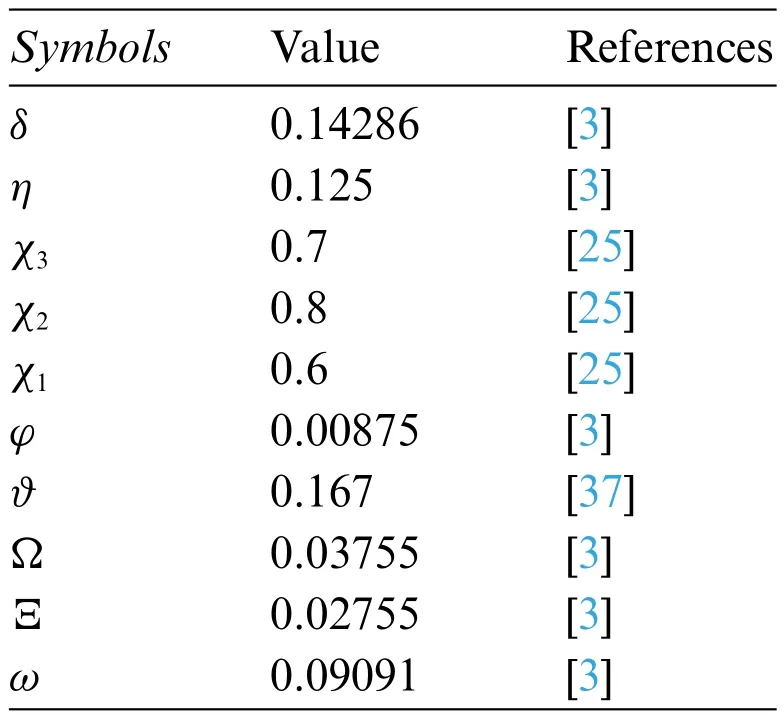
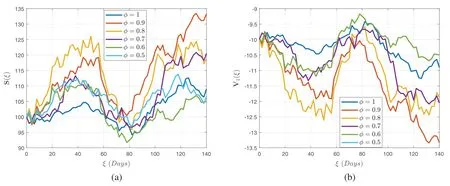

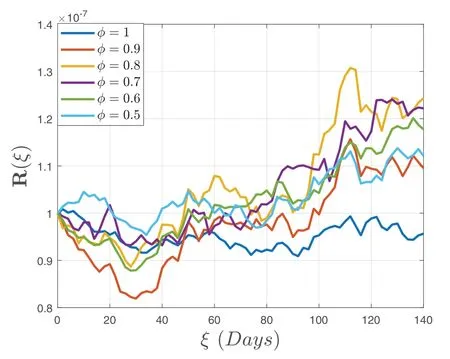
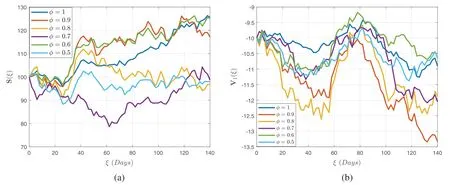
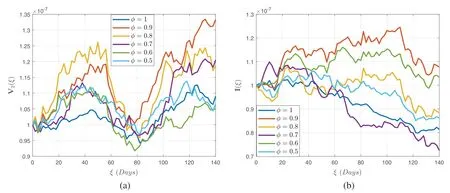
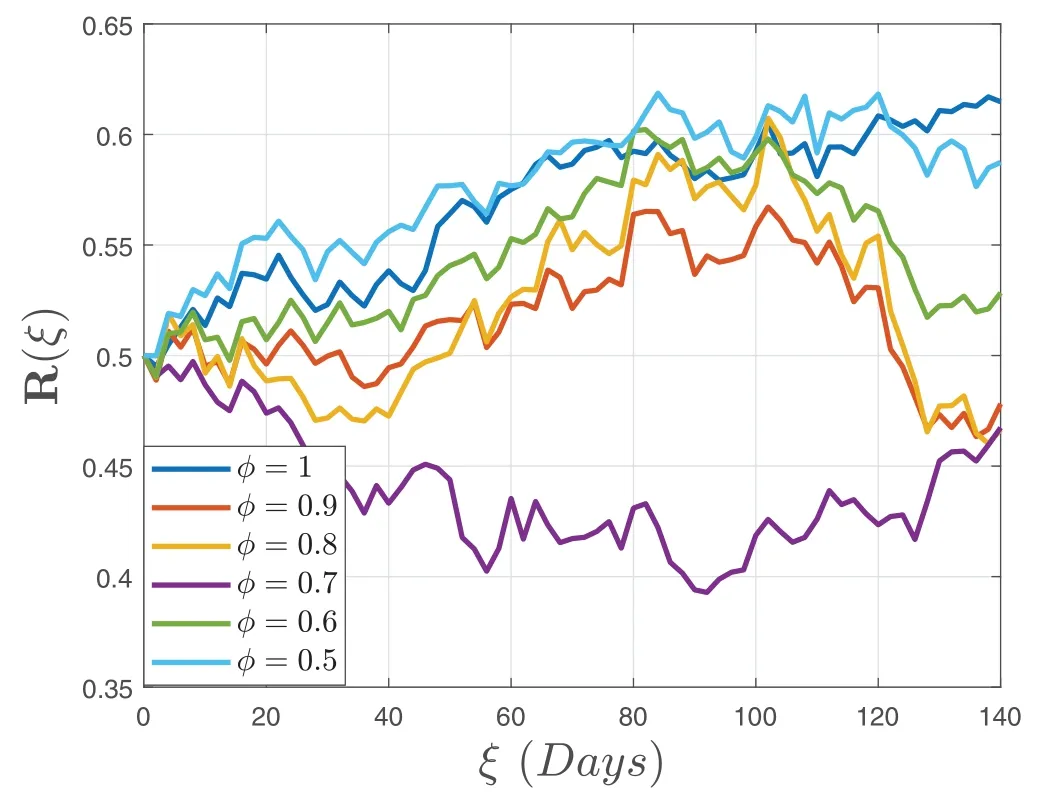
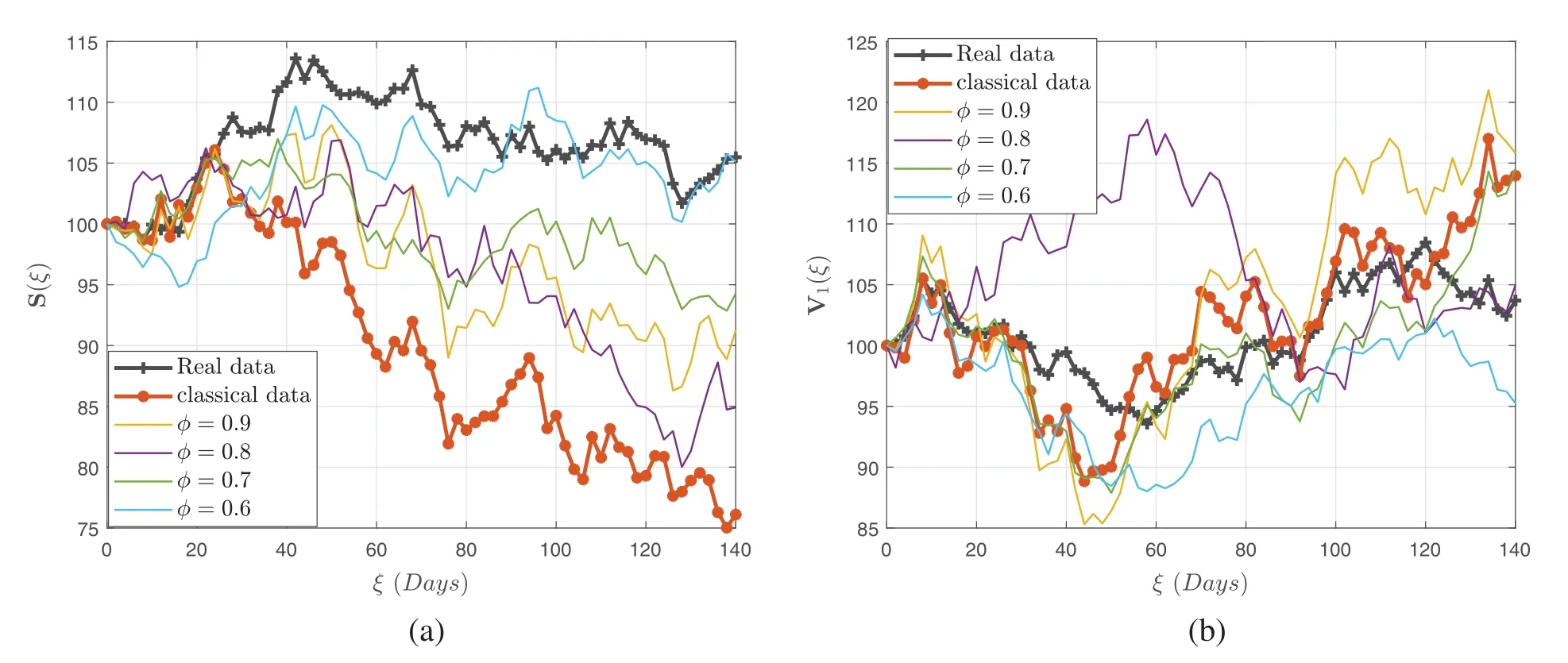

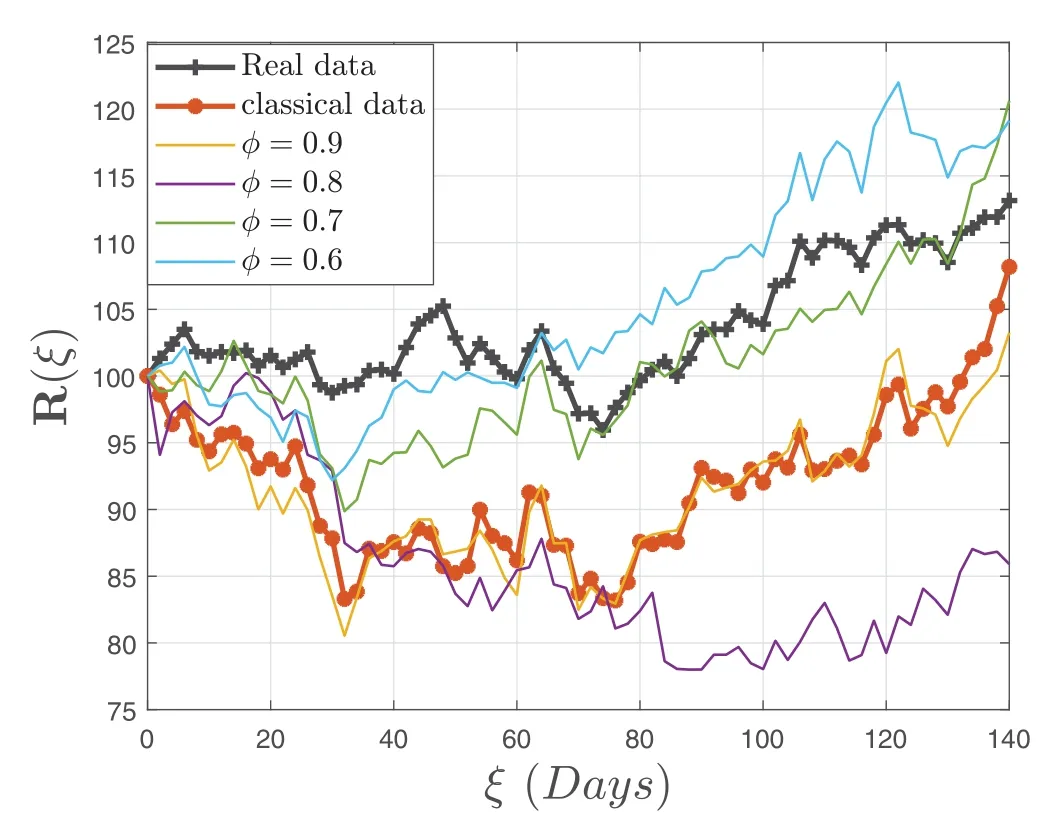
7 Conclusion
 Computer Modeling In Engineering&Sciences2024年6期
Computer Modeling In Engineering&Sciences2024年6期
